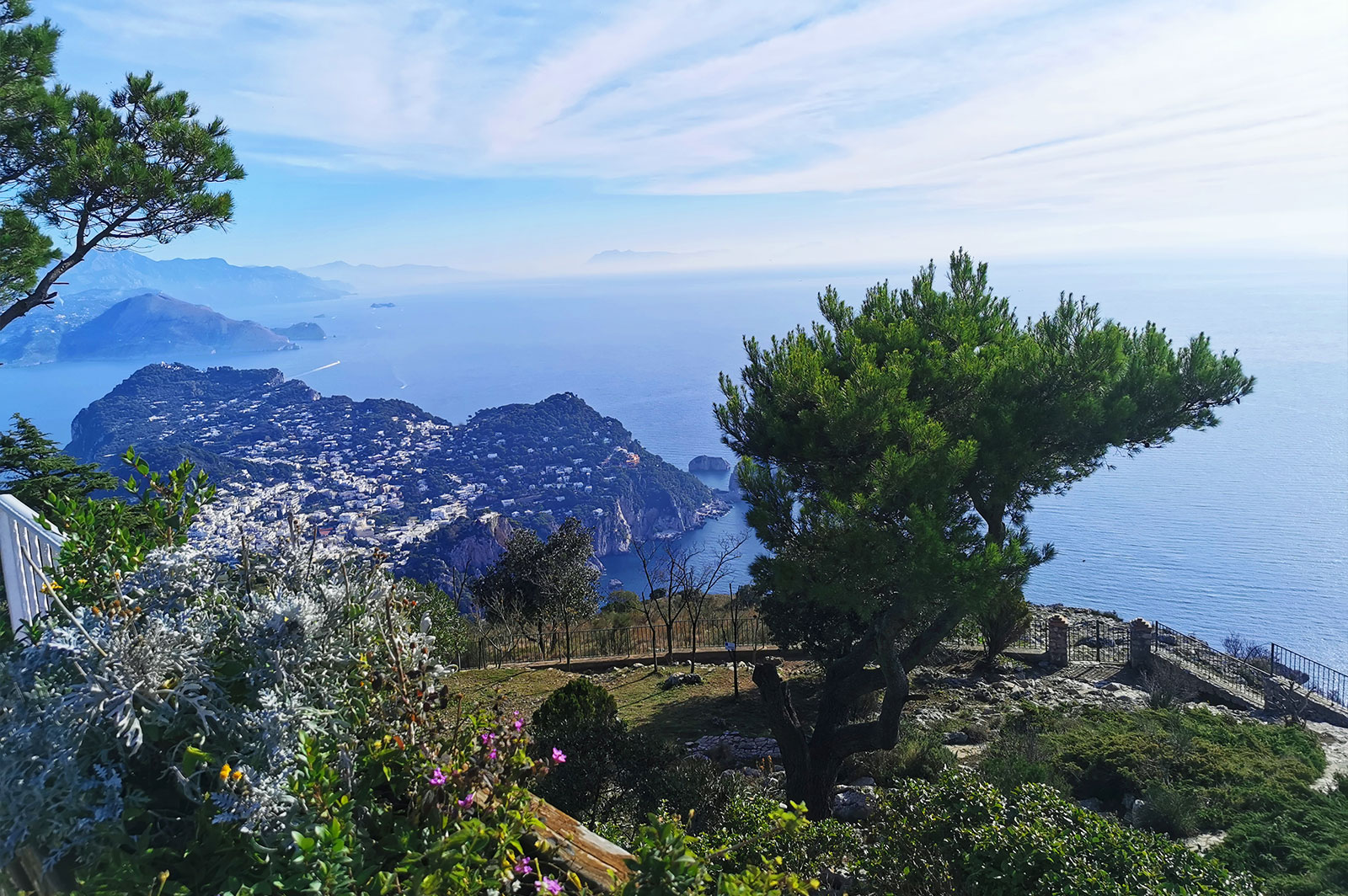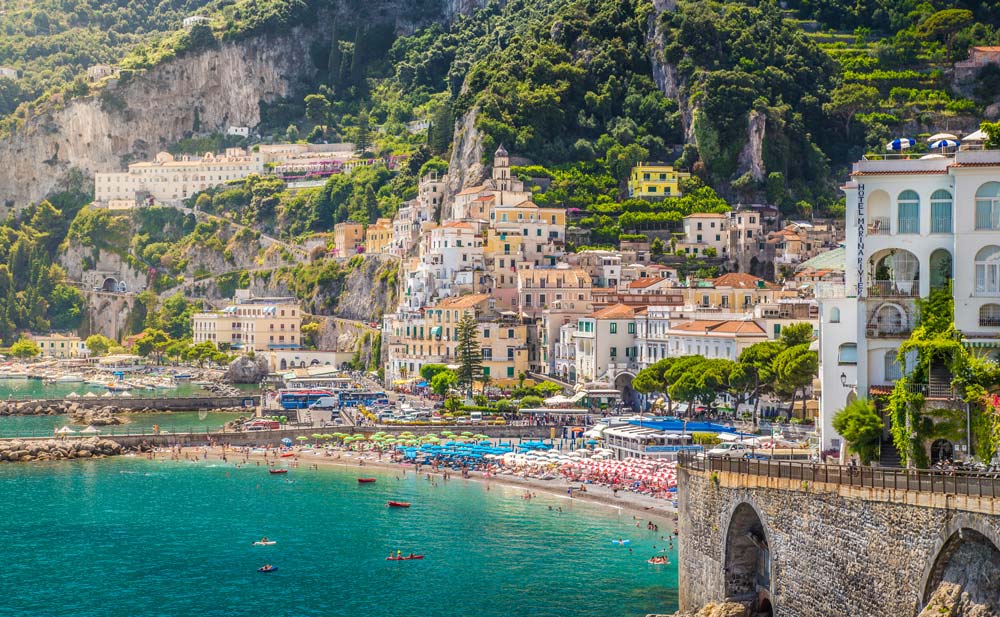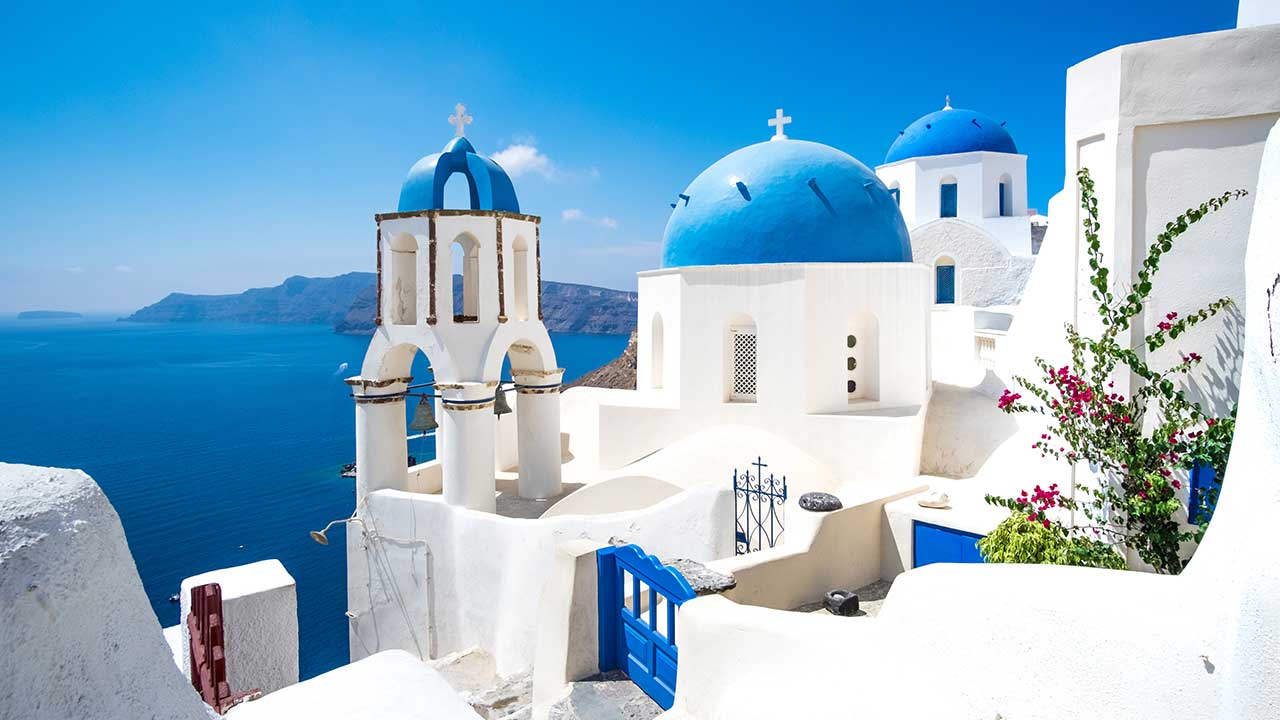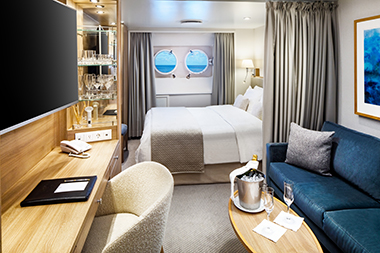
Civitavecchia is a major port located in Rome, primarily utilized for maritime transportation of goods, as well as a fishing port. The commune’s name means “ancient town” and is one of the “Motorways of the Sea” in the Mediterranean, functioning as one of the main links between the mainland of Italy and Sardinia. The ancient name of the port was “Centumcellae,” first mentioned in a letter written by Pliny the Younger in 107 A.D., although scholars debate on whether the name was about the number of rooms of the Trajan Villa, or the number of natural creeks on the coast. Civitavecchia is a part of the Lazio Territory, an area which was confirmed to have social groups since pre-historic times, and the modern town was built over a pre-existing settlement of the Etruscan people in 107-108 B.C.E. (who debated to have founded Rome). In the beginning of the 2nd century, the harbor and town of Centumcellae were simultaneously developed by Emperor Trajan in the territory of Aquae Tauri. As the town became more popular for ships traveling westbound, the Thermal Baths were constructed on the hill of Ficoncella. Centumcellae flourished in the Imperial Age, and by 538 A.D., it had become a Byzantine stronghold. In 728 A.D., it became a member of the Papal States. The Saracens raided Centumcellae many times in the 9th century, prompting Pope Leo VII to have a newer and more secure settlement built by 854. The town, then known as Civita Vetula, was under the rule of several lords, and the Popes temporarily lost control during the French Rule in 1798-1815. In 1870 it entered the Kingdom of Italy. Civitavecchia was severely damaged during WWII, destroying many of the ancient monuments including Forte Michelangelo, which would be rebuilt in the 1950’s. Popular points of interest include the Forte Michelangelo, Terme Taurine, and Cattedrale di San Francesco. There is a wealth of Roman and Vatican architecture and tourists are encouraged to visit many of the museums and take the cultural tours available in this important sea port.

Sitting pretty in the Gulf of Naples, just off the Sorrentine Peninsula, the island of Capri is well known today for its breathtaking landscapes and upscale beach resorts. The island has two harbors, Marina Piccola and Marina Grande. While human presence on the island can be dated back to the Neolithic and the Bronze Age, it was Emperor Augustus who most famously developed Capri by building villas, temples, and planted gardens. Popular to both visitors and native Italians alike, Capri is known for its boutique hotels, trendy restaurants, and annual international film festival, and is a favorite yachting destination. The island also offers many historic landmarks and highlights, including Grotta Azzurra, Villa Jovis, Giardini di Augusto, Certosa di San Giacomo, Villa San Michele di Axel Munthe, and the uniquely shaped Faraglioni Rocks. Mt. Solero marks the highest point of Capri, at 589 meters (about 1932 ft) at its peak. There is also a statue of Emperor Augustus on the mount, who first landed on Capri, over 900 species of vegetation, and, of course, incredible views. Two different hiking routes lead up the mountain and are worthy of exploration. On many itineraries, SeaDream yachts dock alongside in Capri until midnight, allowing guests to step off the yacht and into Capri with ease, without tendering ashore—a unique experience due to the intimate size of our yachts. For those who may not be familiar with the island, Capri offers a sophisticated charm that comes alive in the evening. A guest favorite includes boarding the funicular that runs between the port in Marina Grande and the Piazzetta in Capri town above, where incredible views, buzzing bistros, and luxe boutiques await.

Positano is one of the most picturesque villages along the UNESCO awarded Amalfi Coast (Costiera Amalfitana), in Campania, Italy. The town itself is perched on an enclave on the face of a hill and winds down towards the sea. This incredible setting has been enjoyed by writers, movie stars and millions of tourist each year. John Steinbeck visited in the 50's and stated “Positano bites deep. It is a dream place that isn’t quite real when you are there and becomes beckoningly real after you have gone.” The movie "Under the Tuscan Sun" and several others have been shot on location here. Besides the incredibly romantic atmosphere, it offers excellent shopping, beautiful beaches, hiking trails and a few world recognized and award winning hotels such as Le Sirenuse and Il San Pietro di Positano amongst others. As large coaches cannot navigate down to the pier, only private arrangements are available here. You can book a very nice sedan or van to take you to the neighboring villages or even to Pompeii. As SeaDream anchors just of the pier, you may have the opportunity to access the yachts marina and water toys (conditions and local approval permitting).

Amalfi is a picturesque town in the province of Salerno, in the Campania region of Italy. With its incredible views, it is the central town that makes up the very famous and UNESCO awarded Amalfi Coast (Costiera Amalfitana). Amalfi sports some impressive medieval architecture including; its cathedral of Sant'Andrea (St. Andrew), the church tower, the convent of the Cappuccini, founded by the Amalfitan Cardinal Pietro Capuano. They richly represent the artistic movement prevailing in Southern Italy. From Amalfi, we have created two exciting land adventures for you. One to Scenic Ravello and the other to Fascinating Pompeii. You may also choose to play from the yacht’s marina (Permission and conditions pending) or go on a very scenic hike with one of the officers.

SeaDream yachts anchor in the bay of Giardini Naxos and offer fantastic views of recently awarded UNESCO Natural Site of Mt. Etna (2013) as well as Taormina perched on the cliffside. Shuttle bus service has been arranged to transport guests from Giardini Naxos to the entrance gate of Taormina town up to Castelmola which provides amazing views of the surrounding areas. Perhaps the “must do” adventure here would be to ascend Mt. Etna with your fellow SeaDreamers. Kindly check the Land Adventure tab for the specifics. Other options include an incredible and authentic feast at the Godfather Villa. As we are anchored and if conditions allow, we will offer water sports both in the morning and in the afternoon.

Fiskardo is a village located about 54 km north of Argostoli and a district of the city of Erisos.The coast around Fiskardo is mainly rocky with numerous pebble-beached coves. There are numerous viewpoints in the area around the village that offer panoramic views of the Ionian Sea including Daskalio island, Ithaca, northwestern Aetolia-Acarnania and the island of Lefkada.

Itea is a small town situated on the north coast of the Gulf of Corinth, 2 km west of Kirra, 8 km southwest of Delphi. The town has a nice beach along with some shops, cafes and restaurants. It allows the closest access to the incredible sight of Delphi which is within the top three archeological attractions in Greece and in 1987 was inscribed as a UNESCO Heritage Site. It is believed the Zeus wanted to find the center of the Earth so he sent two eagles flying from the eastern and western extremities and where they met was Delphi – becoming the “navel/center of the earth”. SeaDream has arranged the very best guides and vehicles from Athens to enhance this incredible visit further. Your guided visit highlights the ancient Sanctuary of Apollo, where Pythia, the celebrated Oracle dwelt, the Temple of Apollo, the Sacred Way, the amphitheater, the best-preserved stadium of Greece, and the Castalia Spring, where in ancient days the pilgrims had to wash before they were allowed to consult the Oracle. In the Delphi Museum, see such treasures as the Omphalos, which marked the center of the world, and the magnificent bronze Charioteer, one of the finest pieces surviving from the 5th century BC. After the museum, there will be free time to visit the village of Delphi. SeaDream has the option of docking along the small pier in Itea or anchoring off to provide water sports options. This is dependent on availability as well as a number of guests visiting the archeological site.

So narrow! So dramatic! You'll understand why SeaDream says "expect the unexpected" as your yacht transits the Corinth Canal. The canal was first completed in 1893, despite previous attempts from ancient times; the first plans being from 602BC. The Roman Emporer Nero actually started construction in 67AD, making the first cut himself with a golden pick. The canal we transit is 6.3 kilometres (3.9 mi) in length. Before the canal, ships sailing between the Aegean and the Adriatic had to circumnavigate the Peloponnese Peninsula adding about 185 nautical miles to their voyage.

Santorini, officially named Thira, is the southernmost Greek island that is within the Cyclades archipelago, in the southern Aegean Sea. Part of the regional unit Thira, the municipality of Santorini is comprised of the island Santorini, Therasia, and other uninhabited islands of Christiana, Palaia Kameni, Aspronisi, and Nea Kameni. The geological history of Santorini is quite complex due to the area’s volcanism and is currently a water-filled caldera: a rectangular lagoon that is surrounded by three steep cliffs. The name Santorini is a contraction of the name Santa Irini, which is based on an ancient cathedral found in the island’s village of Perissa. This name was given by the Latin Empire in the 13th Century. During the Ottoman Empire, Santorini was called “Santurin” or “Santoron”, and in early times, it was named Kalliste, Strongyle, and Thera. Santorini is the site of the Minoan Eruption (also known as the Thera Eruption), one of the largest eruptions ever in recorded history. The origins of Plato’s story of Atlantis is believed to have a connection to this eruption that destroyed the early settlements on what was formerly a single island. The descriptions found of Plato’s Atlantis strongly resembles Thera, and with seismological, archaeological, and volcanological evidence, these claims are further supported. There is also speculation that the eruption is related to the Exodus of the Israelites, as well as causing the plagues described in the Bible in ancient Egypt. The economy is sustained by two principal industries: tourism and agriculture, and has recently been voted as one of the world’s most beautiful islands in various outlets such as the Traveler’s Choice Awards in 2015. The wine industry in Santorini is becoming more relevant as well, made up of Assyrtiko, Athiri and Aidani grape varieties, which is best exemplified in Vinsanto (“holy wine”) which contains all three Aegean varietals. Although Santorini is highly arid, it’s unique ecology and climate allows it to grow unique and prized produce, such as cherry tomatoes, Lathyrus clymenum (a legume), and capers. Thus, tourists indulge in local specialties such as Brantada, Fava, and the traditional dish Santorinio Sfougato.

There is one main town on Hydra, known simply as "Hydra port". It consists of a crescent-shaped harbor, around which is centered a strand of restaurants, shops, markets, and galleries that cater to tourists and locals (Hydriots). Steep stone streets lead up and outwards from the harbor area. The charm of Hydra town certainly lies in her rich history, beautiful port and waterfront unspoiled by motorized vehicles. The island offers a rugged charm and some spectacular scenes and makes the perfect place for some self-exploration.

Piraeus, roughly translating to “the place over the passage”, is an important Greek port located within the Athens agglomeration, in the Attica Basin. It is 12 kilometers from the municipality of Athens, considered the fourth largest and is the third most populous amongst all the municipalities of Greece. Now a peninsula, Piraeus, originally a rocky island, was developed in early 5th Century B.C. when it was initially designated as Athens’ import and transit trade port. It is the largest marine-based shipping center of Greece, one of the largest ports in Europe, and considered the second largest passenger port in the world. Inhabited since the 26th Century, it wasn’t until the 6th Century B.C. that Piraeus began catching attention. The land of Piraeus was essentially impassable, flooded by the sea most of the year until centuries passed and the flooding ceased. By the 5th Century B.C. it became a navy base for the Athenian fleet for the natural harbors and the strategic potential they carried. Athenian general and politician Themistocles fortified Piraeus’ three harbors Kantharos, Zea and Munichia, created ship houses and completed his walls in 471 B.C., which led to the port becoming a great military and commercial harbor. There are many archaeological sites, points of interest and entertainment available in Piraeus. Most famous for its tavernas and cuisine, several popular events take place in Piraeus, such as the Ecocinema International Film Festival, the Maritime Festival, the Piraeus Rock Wave Festival and the Three Kings’ Way Festival. There are also many theaters, including the Municipal Theater, the open air Veakeio Theater, and the Menandreio Theater. Museums in Piraeus include the Archaeological Museum of Piraeus, the Merchant Shipping History Institute Exhibition, the Panos Aravantinos Decor Museum, the Georgios Averof Museum Ship and the Museum of Electric Railways. Be sure to catch the panoramic views available from the hill of Kastella, overlooking Athens and the Saronic Gulf!
Suites & Staterooms
*Single Supplement for this voyage is 200% for Yacht Club Deck 2, 3 and 4. For Commodore, Admiral and Owners Suite, a 200% single supplement rate applies.
Government, Port, Document Issuance, Handling & Service fees: $488 per guest (included)
Please Note: Fares are capacity controlled and may change without notice. The fares are per person based on double occupancy. Single and third person rates are also available. SeaDream Yacht Club strongly recommends that all guests purchase travel insurance.
Yachting Land Adventures & Activities
Please check back soon for updates.
Testimonials
You are organizing great trips and you have excellent service. I think I will use your services more in future. Albert R.Illinois
This was the best small ship cruise we have undertaken and thoroughly enjoyed the experience. We would certainly recommend Seadream and intend [to] return in the future. Mr. & Mrs. CowieEngland





